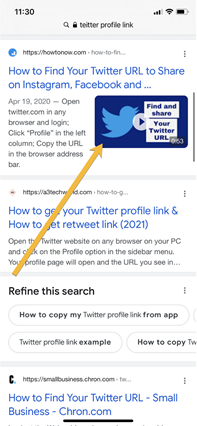You work hard to create a great website with a cool design and quality content, but then of course comes optimizing that website so that you will show up on a search engine results page (SERP).
After all, you want people to actually find that site you worked so hard to create. It’s a lot of work, but it’s important that you go the extra mile and don’t stop there.
You have to remember that showing up on page 1 of Google is a good start, but it’s not the end goal. You need people to click on your link, and that’s where focusing on how your result looks on a SERP comes into play.
It’s important to make sure you’re doing everything you can to make that listing jump off the page and beat those other page 1 results (or any page for that matter) that are trying to compete.
Top Ways to Help Make Sure Your Company Stands Out on a SERP
There are several different ways that you can help your SERP listing stand out, and fortunately most are pretty easy. This is also an area where you can get involved with as many different methods as you can and your listing won’t look overdone. The more the merrier.
Below are a few of your options:
#1. Your Brand Name and Logo
Your domain name and logo form the top-most part of your search snippet so they impact your click-through:

So keep a close eye on your branding. If you are only starting out, pick a name that will be catchy and memorable. Using alternative (non-com) domains may help with that: There are more domain names available once you stop focusing on com domains only and those meaningful top-level domains (e.g. .press, .store, .fun) may actually stand out in search.
Here’s a tool helping you generate a company name (and even generate a matching logo) that will be catchy and creative enough to stand out in search/
#2. Video Snippets
Video is becoming more and more popular, so showing that one of the results (yours) has a video to help will set you apart.
A video snippet stands out in search thanks to the video thumbnail:

To earn this snippet, all you need is to embed a Youtube video on your page. To increase your chances of this rich snippet, you may use video schema. There are quite a few plugins that can help you do that.
You can embed anyone’s video but I’d strongly recommend developing your own video creation strategy because you can control the message and the branding. It is totally doable especially with quite a few free video creation and editing tools we have at our disposal these days.
This recommendation above actually falls under what is called a “rich snippet.” There are also other types of rich snippets you can use that depend on your industry. For example, some SERP listings will have ratings and reviews listed under them, and others will have instructions included (How-To rich snippets). The video rich snippet is just the most universal, i.e. they work for just about any page.
#3. Sitelinks/Deep Links
Sitelinks, sometimes known as deep links, help to show indented results of internal pages of your company just under your company homepage. In the example below, you can see that there are links to internal pages including the About page, Social Media, Tech, and Social Good Summit (and sometimes there will be more than 4 sitelinks). This makes it easy for users to get to the page they really want faster.
The downside to sitelinks is the fact that Google is in charge of determining which sites are included in this feature. This means that until Google notices your site growing in popularity in your niche, you probably won’t have sitelinks showing up on a SERP. Nonetheless, it’s important to know this exists so that you can work to build up your site and hopefully get noticed by Google (it will also help you stop wondering why your site isn’t involved!).
#4. Great heading and description
This is the oldest way to make your company look better on a results page.
Your HTML title (i.e. headline) will certainly matter because it’s the first thing people will read when considering if they want to click. Headlines should be no more than 60 characters so that users can see your entire headline. Headlines that seem easy to understand such as “How To’s” and “Top 10 Ways” often do well when it comes to search, but it of course depends upon your subject and content.
The description, or Meta description, that will show up under the headline on a SERP is where people tend to make the most mistakes. Consider the following two examples:
Example #1
Improve Your SERP Listing
Let’s talk about why a SERP listing is so important and how you can make yours look better. In this article you will learn how to go through and create a better listing.
Example #2:
Top 5 Ways to Make Your Company Stand Out on a SERP
You work hard to get your company to the top of a results page, so make sure it stands out! Learn a few simple things you can do to help you get the clicks you want here.
The examples above are somewhat exaggerated, but as you can see, the bottom example is much more interesting. Because Meta descriptions don’t necessarily help your SEO or help you rank, the discussion about good Meta descriptions has been pretty much silenced over the last few years.
However, this is one area that will make your listing simply look better and seem more clickable to searchers. It’s so easy and something so many people ignore.
The Takeaway
Once again, the whole idea here is that just getting your business on a SERP is not good enough. In fact, it will hardly mean anything if the clicks are constantly going to the listing above yours. You work hard to optimize your website to earn a good spot on a SERP in the first place, so it’s important that you don’t stop there and essentially waste your big chance.
Do you have any more tips about making your business look good on a SERP? Have you seen an increase in clicks since you’ve made any changes? Let us know your story and your thoughts in the comments below.
This is a Contributor Post. Opinions expressed here are opinions of the Contributor. Influencive does not endorse or review brands mentioned; does not and cannot investigate relationships with brands, products, and people mentioned and is up to the Contributor to disclose. Contributors, amongst other accounts and articles may be professional fee-based.

